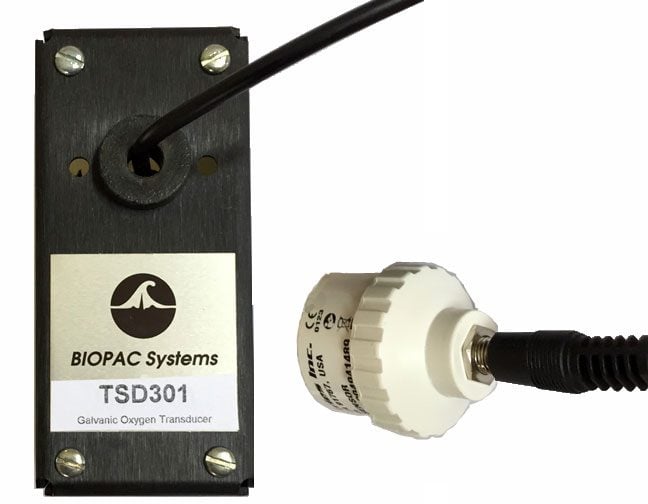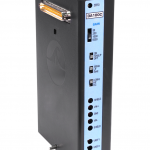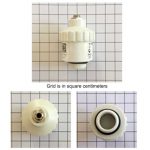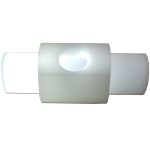Operating Principle: Electrochemical (Galvanic)
Range: 0-100% Oxygen Concentration
Output: 8.0-12.0 mV nominal (dry air at 25 °C)
Response Time (10% to 90%): Less than 12 seconds @ flow range 0.2-2.0 Liters/min
Operating Temperature: 0 to 45 °C
Linearity: ±2% of Full Scale Range, applied for 5 minutes
Stability: Less than 1% of Full Scale Range, 8 hour period, constant Temperature, Pressure, Humidity
Humidity: 5%-95% Relative, Non-condensing
Temperature Compensation: NTC (internal)
Zero Offset: Less that 200 µV (100% Nitrogen–5 minutes)
Warm-up Time: Less than 30 minutes, after sensor replacement
Calibration: Sensor is typically calibrated from 20.93% oxygen in ambient “fresh” air to 100% oxygen from a tank source.
Expected Life: Greater than 1,000,000 oxygen hours (approximately five and a half years in ambient air)
Storage Temperature Range: -20 to 50 °C (recommended 5 to 30 °C)
Electrical Connector: 3.5 mm female mono phone jack
Sensing port threads on RX301: Tap size is M16-1 (15 mm drill hole)
Interface: DA100C, via TSD301 cabling
Cable length: 3 meters (TSD301)
Load Resistance: 10 kohms (TSD301 assy)
Replacement Sensor: RX301 (detachable from TSD301)
Galvanic Oxygen Transducer 0-100%
The TSD301 Galvanic Oxygen Transducer is used to measure ambient or flow stream oxygen levels in a range of 0-100%. The TSD301 has a response time of approximately 12 seconds for measuring changes in oxygen levels for input gases at a flow rate of 0.2-2.0 L/min with approximately 2% linearity.
The TSD301 transducer incorporates a detachable sensor (RX301). The sensor operates via the electrochemical (galvanic) principle and is replaceable; the sensor has an expected lifetime of approximately five years in constant exposure to atmosphere.
Interfaces with DA100C.
See More...
Details
Support
Downloads/Resources
Knowledge Base
- * CLEANING GUIDELINES *
- About License Keys
- AC mode
- AcqKnowledge accuracy
- AcqKnowledge iLok key lost or unavailable
- Amplifier analog output signals
- Amplifier filter settings
- Arbitrary waveform stimulation
- Band-pass and band-stop filters
- BioNomadix Signal Interruption
- Calculating file sizes
- Calibration values
- Checking Finger Cuff Lifetime for NIBP100D/NIBP100D-HD
- Common mistakes/general troubleshooting
- Connecting Calibration Gas Tanks & Mixing Chambers
- Editing noisy data
- Electrodermal activity measurements
- Event Markers | Correcting Automated Placement
- Excel files exported from BIOPAC software open in Excel 'Protected View'
- Glossary of specification terminology
- Grounding guidelines
- High pass filters
- How can I move QRS peak event marks from the bottom of S waves to the top of R waves?
- Installation CD/DVD lost or damaged...how can I re-install software?
- Interfacing third-party transducers
- Low pass filters
- Notch filter
- Railing signal (flatline)
- Recording good data
- Troubleshooting MP160 Ethernet Communication
- Using other software with BIOPAC hardware
- VREF, reference excitation voltage










Stay Connected